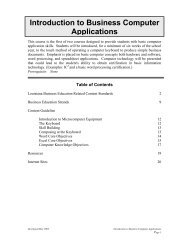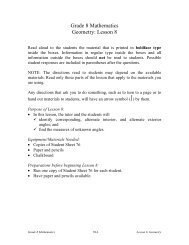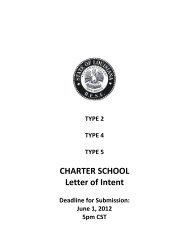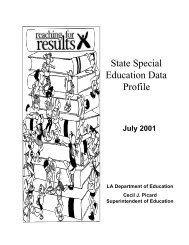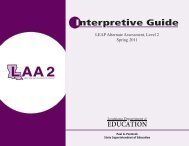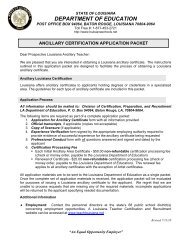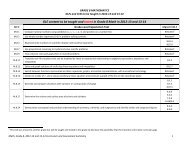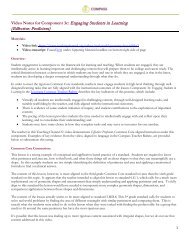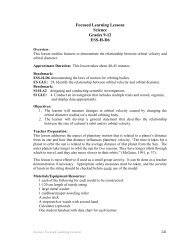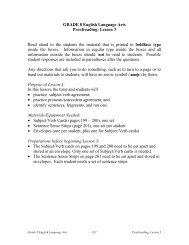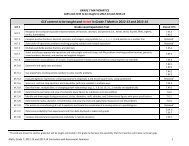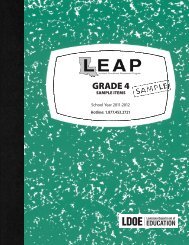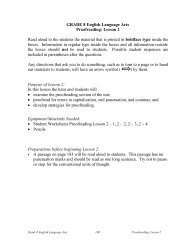Reading & Responding - Louisiana Department of Education
Reading & Responding - Louisiana Department of Education
Reading & Responding - Louisiana Department of Education
Create successful ePaper yourself
Turn your PDF publications into a flip-book with our unique Google optimized e-Paper software.
LESSON 11 - “TIME TRAVEL”1Content Standard:7.3: Recognize an author’s purpose and point <strong>of</strong> viewIntroduction toStudents:To know how the author feels about the subject, it is helpful to think about thewords the author uses to describe the subject. What feeling do you get from readingthese words? These are clues that show how the author feels. Sometimes, eventhe punctuation can be a clue. For example, using an exclamation point can showexcitement or another strong feeling.If you answered B, C, or D, your answer is incorrect. Let’s talk about why. Look back at the passage and find thewords the author uses to describe time travel.Which best describes how the writer most likely feels about time travel?A. excited Correct. In the first paragraph, the author calls time travel “an important field <strong>of</strong> study.” Thenin the last paragraph, the author says that “questions still swirl around the idea <strong>of</strong> time travel.” The lastsentence might be the best clue <strong>of</strong> all: “Maybe time travel will become a reality one day!” This is the bestanswer.B. scared (What is the problem with this answer? The author does not say anything to show fear about timetravel.)C. confused (What is the problem with this answer? The author gives facts about time travel in a logicalorder. This shows that the author is not confused.)D. angry (What is the problem with this answer? There is nothing in the passage to make you think that theauthor feels angry about time travel.)LEAPGrade 4 | Teachers GuideELA | READING AND RESPONDING26



